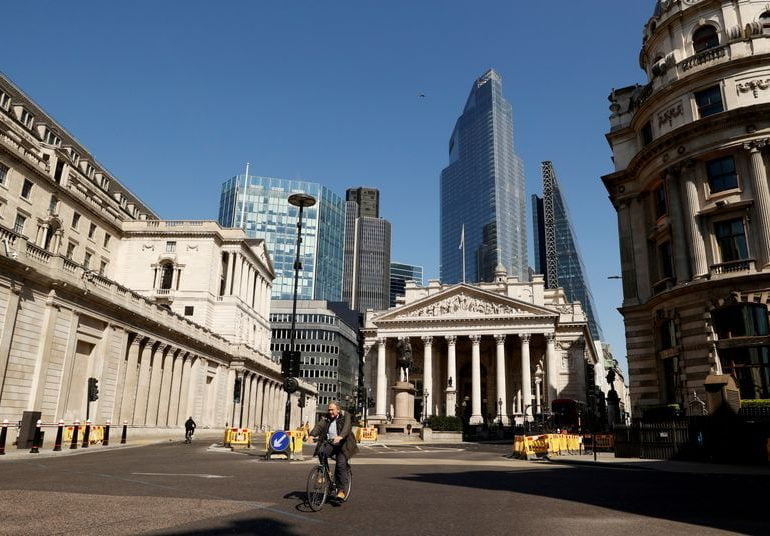LONDON (Reuters) – The Bank of England said Britain’s economy would probably take longer to get back to its pre-pandemic size than it previously thought, but it was still weighing up the risks of cutting interest rates below zero to jump-start growth.
As it announced unanimous votes by its policymakers to keep its key interest rate at just 0.1% and make no changes to its huge bond-buying programme, the BoE said the economy would not recover its pre-pandemic size until the end of 2021.
In May, it had said it thought it might get back to its pre-crisis size during the second half of 2021.
“There are some very hard yards, to borrow a rugby phrase, to come. And frankly, we are ready to act, should that be needed,” Bank of England Governor Andrew Bailey told reporters.
On negative rates, Bailey said: “They are part of our toolbox … But at the moment we do not have a plan to use them.”
The BoE’s protections for 2020 are less grim than in May. Unemployment is expected to peak at 7.5% at the end of this year, almost double the most recent rate but lower than the BoE’s previous estimate of just under 10%.
The overall economy now looks on course for a 9.5% drop this year. That would be the worst performance in 99 years but less severe than a 14% plunge in the BoE’s May scenario, which would have been the worst in more than three centuries.
Sterling hit its highest level against the dollar in five months and was up about 0.4% on the day. British government bond yields also rose, as the BoE confirmed a further slowdown in the pace of bond purchases.
However, the recovery would be slower, reflecting the more drawn-out impact of COVID-19 on people’s willingness to spend on social activities and the chance of further local lockdowns, among other factors.
“With unemployment set to rise as furlough unwinds and double trouble from Brexit and COVID, we expect a change of course and further easing in the end,” Morgan Stanley (NYSE:MS) economists Jacob Nell and Bruna Skarica said.
SUB-ZERO INFLATION
The projections showed the BoE’s Monetary Policy Committee thought inflation was likely to fall below zero this month before returning to around the BoE’s 2% target over the next couple of years and rising to 2.2% in 2023.
When inflation is forecast to rise above 2%, that is typically a signal the BoE does not expect to loosen policy more.
Bailey and his fellow policymakers signalled they would not be in a rush to raise borrowing costs when inflation does rise, saying they would want to see significant progress in eroding slack in the economy.
The BoE also said its review of whether to take rates into negative territory was ongoing and there were factors that could change its previous view that their floor was just above zero.
However it said other countries showed that banks were often unable in practice to cut deposit rates below zero, limiting their ability to pass on lower interest rates to lenders.
Banks also feared negative rates would erode their capital – especially at a time like now when they risked heavy losses on some lending.
“As a result, negative policy rates at this time could be less effective as a tool to stimulate the economy,” the BoE said.
Economists mostly described the BoE’s tone on negative rates as cautious.
“The MPR’s discussion on negative rates was lukewarm at best,” said ING economist James Smith. Analysts at Citi, however, said the BoE’s announcement laid the ground for a negative Bank Rate by mid-2021.
Leave a comment
